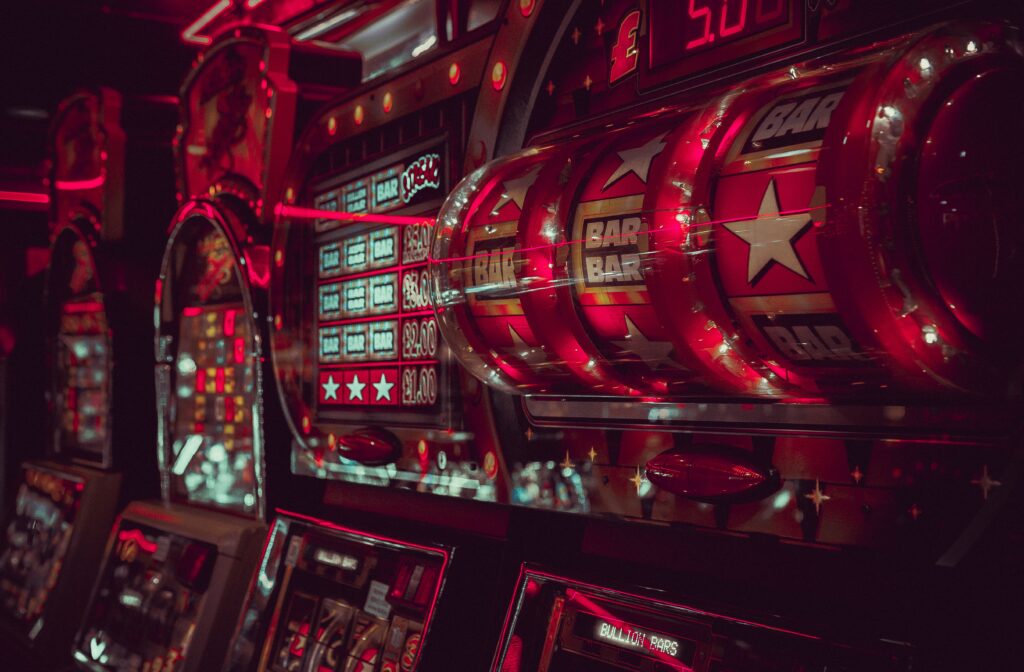Slot machines are one of the most popular attractions in any casino, both in physical locations and online. Their bright lights, engaging sounds, and potential for big payouts draw players in, but there are many myths and misconceptions about how they work. This article aims to debunk common myths, explain the mechanics of slot machines, provide tips for playing smart, and explore the history and evolution of these captivating games.

Common Myths About Slot Machines
Myth 1: Hot and Cold Machines
Myth: Some slot machines are “hot” and are more likely to pay out, while others are “cold” and less likely to pay out.
Fact: Slot machines operate using random number generators (RNGs), which ensure that each spin is independent of the previous one. This means that the concept of hot and cold machines is a myth. A machine that has paid out recently is no more or less likely to pay out on the next spin than one that hasn’t paid out in a while.
Myth 2: Timing Your Play
Myth: Playing at certain times of the day or on specific days of the week can increase your chances of winning.
Fact: The RNG ensures that the outcome of each spin is completely random, regardless of the time of day or day of the week. There is no optimal time to play slot machines to increase your chances of winning.
Myth 3: Manual Spins vs. Autoplay
Myth: Manually stopping the reels or using the autoplay function affects the outcome of the game.
Fact: Whether you manually stop the reels or use autoplay, the outcome is determined by the RNG at the exact moment you initiate the spin. The method you choose to spin the reels does not impact your chances of winning.
How Slot Machines Work
The Role of Random Number Generators (RNGs)
At the core of every slot machine is the RNG, a computer algorithm that generates a sequence of numbers at incredibly high speeds. These numbers correspond to the positions of the reels. When you press the spin button, the RNG stops at a particular number sequence, which determines the outcome of the spin.
Paylines and Payouts
Slot machines have multiple paylines, which are the lines across the reels where matching symbols must land to form a winning combination. Payouts vary depending on the combination of symbols and the number of active paylines. Understanding the pay table, which shows the value of each symbol and combination, is crucial for knowing what to expect from each spin.
Volatility and RTP
- Volatility: This refers to the risk level of the slot machine. High volatility slots have less frequent but larger payouts, while low volatility slots have more frequent but smaller payouts.
- RTP (Return to Player): This is the percentage of all wagered money that a slot machine is expected to pay back to players over time. For example, a slot with an RTP of 96% will, on average, return £96 for every £100 wagered.
Tips for Choosing the Right Slot Machine and Managing Your Bankroll
Choosing the Right Slot Machine
- Check the RTP: Opt for slot machines with a higher RTP to increase your chances of a better return over time.
- Understand the Volatility: Choose a slot that matches your risk tolerance and playing style. If you prefer smaller, frequent wins, go for low volatility slots. If you’re after big jackpots, high volatility slots might be your preference.
- Explore New Online Slots: Trying out new online slots can be exciting as they often come with innovative features and themes. Many online casinos offer demos, allowing you to try the games before wagering real money.
Managing Your Bankroll
- Set a Budget: Determine how much money you are willing to spend on slot machines and stick to that budget. Avoid chasing losses.
- Bet Wisely: Adjust your bet size according to your bankroll. Smaller bets allow for longer playtime and more chances to hit a winning combination.
- Use Bonuses and Promotions: Take advantage of casino bonuses and promotions, which can provide extra funds or free spins to extend your gameplay.
The History and Evolution of Slot Machines
Early Beginnings
The first slot machine, known as the “Liberty Bell,” was invented by Charles Fey in 1895. This mechanical device had three reels and five symbols: horseshoes, diamonds, spades, hearts, and a cracked Liberty Bell. A winning combination of three Liberty Bells paid out the highest prize of 50 cents.
Electromechanical Era
In the 1960s, Bally Manufacturing introduced the first electromechanical slot machine, “Money Honey.” This machine featured more complex mechanisms and automatic payouts of up to 500 coins, paving the way for modern slot machines.
Video Slots
The 1970s saw the advent of video slots, which used a video screen instead of physical reels. This allowed for more creative game designs and multiple paylines. The first video slot, “Fortune Coin,” was developed by Walt Fraley and became popular in Las Vegas casinos.
Online Slots and Modern Innovations
The rise of the internet in the 1990s led to the creation of online casinos, bringing slot machines into the digital realm. Online slots offer a wide variety of themes, features, and progressive jackpots. Today, new online slots continue to push the boundaries of creativity and technology, providing players with immersive and engaging experiences.
Conclusion
Slot machines have come a long way from their humble beginnings to become a staple of both land-based and online casinos. Understanding the myths, facts, and mechanics of slot machines can help you play smarter and enjoy the experience more fully. Whether you’re spinning the reels at a physical casino or trying out new online slots, the key is to have fun and gamble responsibly. By choosing the right machine, managing your bankroll, and staying informed, you can make the most of your slot machine adventures.
